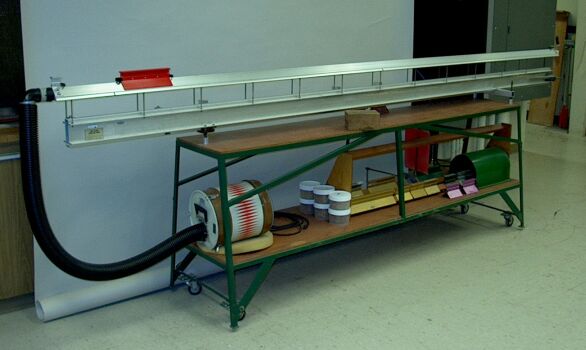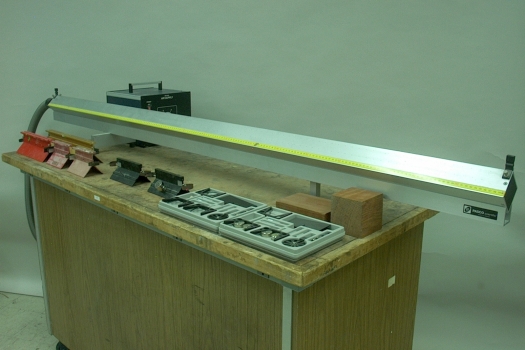 |
 |
 |
 |
You can use a glider moving on a level air track to demonstrate uniform velocity, inertia, and friction (when the blower is turned off).
The Ealing air track at left is 3.8 meters long. Though it is possible to use it in both lecture halls 1610 and 1640, in 1640 the smaller PASCO unit at right, which is 2 m long, is probably more convenient.
With this demonstration you can show the elements of motion in one dimension, that is, along a straight line. By choosing some point on the air track as a reference, you can show position, x, and by giving a glider placed on the air track an impulse, you can show motion at constant velocity, v. (The gliders are gradually slowed by drag, but with the air supply turned on, friction between them and the track is negligible, and over several passes along the track, velocity is essentially constant.) You can note that v = i(dx/dt) and v = dx/dt, and that if the initial position of the glider is x0 at some reference time, then its position at any time is x = x0 + vt, where t is the time elapsed since that reference time.
The fact that you need to give a glider an initial push to start it moving, or to block it to stop it while it is moving, allows you to illustrate the concept of inertia. The three glider sizes available, in mass ratios of 1:2:3, enable you to show the relationship between the mass of the glider and its inertia. The greater the mass, the greater the inertia, and the greater the push necessary to set the glider moving at a given velocity. (See demonstration 12.27 -- Ball race.)
If you send a glider down the track and then turn off the blower, friction between the glider and the track greatly decelerates the glider, and it quickly comes to a stop. (See demonstrations 12.66 -- Pull friction blocks with spring scale, and 12.69 -- Slide blocks down incline.)